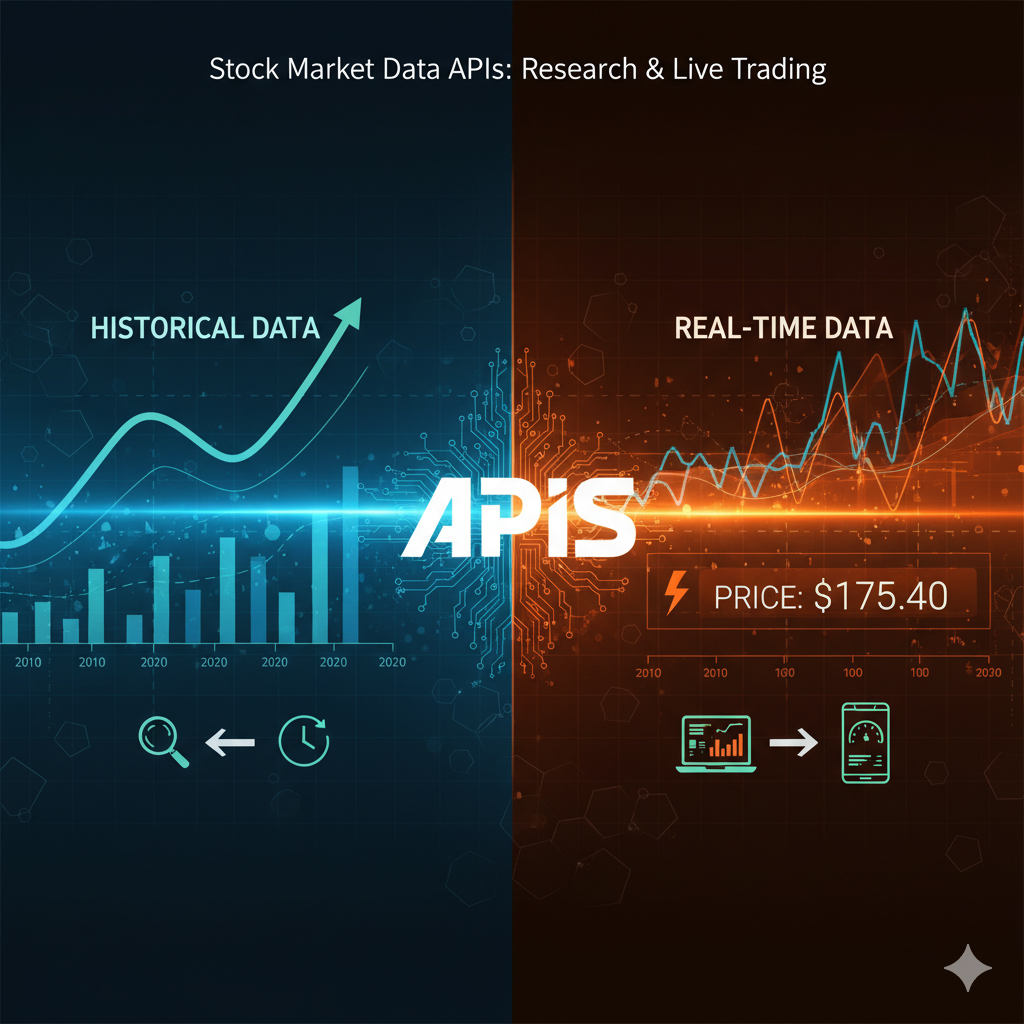Access to real-time stock market data is essential for both investors and developers building financial applications. Whether you’re creating a trading bot, a stock tracker, or an analytics dashboard, integrating a real-time stock market data API can elevate your project by providing instant, accurate market insights.
This article explores what a stock market data API is, how it works, why developers use it, and how a share price API simplifies real-time data integration for financial applications.
What Is a Real-Time Stock Market Data API?
A real-time stock market data API is a web-based service that provides developers with instant access to live stock prices, trading volumes, historical data, and market trends from global exchanges.
Instead of manually scraping financial websites or dealing with outdated CSV files, developers can use a simple API call to retrieve live stock information in a structured format such as JSON or XML.
Example:
A basic GET request to a stock API might look like this:
https://api.marketstack.com/v1/tickers/AAPL/intraday/latest?access_key=YOUR_API_KEY
This returns real-time trading data for Apple Inc. (AAPL), including its latest share price, volume, and timestamp.
How Does a Stock Market Data API Work?
APIs serve as a bridge between your application and financial market data sources. Here’s how it works:
-
Data Aggregation – The API provider collects data from multiple stock exchanges and financial feeds.
-
Data Normalization – The data is cleaned, standardized, and formatted into consistent fields (e.g., symbol, open, close, volume).
-
API Access – Developers send HTTP requests with parameters like stock symbol, date, or exchange.
-
Response Delivery – The API returns structured, real-time data that applications can use for display or analysis.
Most APIs use RESTful architecture, making them easy to integrate into applications using languages like Python, JavaScript, PHP, or Ruby.
Benefits of Using a Real-Time Stock Market Data API
For developers and businesses, using a real-time stock market data API brings several advantages:
1. Instant Data Access
APIs deliver market data in real time, ensuring that users always view up-to-date stock information.
2. Global Market Coverage
Access data from multiple exchanges, including NYSE, NASDAQ, LSE, and BSE, through a single integration.
3. Ease of Integration
RESTful APIs use JSON responses that can be easily integrated into dashboards, web apps, or mobile platforms.
4. Scalability
Whether you’re building a small prototype or a large-scale trading platform, APIs can scale with your application’s needs.
5. Cost-Effectiveness
Many APIs offer flexible pricing models, allowing developers to start for free and scale as data demands increase.
What Is a Share Price API?
A share price API is a specific type of market data API that focuses on delivering real-time or delayed price updates for individual stocks. Developers often use share price APIs for:
-
Portfolio management apps
-
Real-time trading dashboards
-
Stock comparison tools
-
Financial news and analysis websites
A share price API provides detailed price information such as:
-
Current market price
-
Opening and closing values
-
Daily highs and lows
-
Volume and percentage change
Use Cases for Developers
Here are some practical ways developers use real-time stock market data APIs and share price APIs:
1. Trading Applications
Developers can build automated trading bots that execute buy/sell orders based on live data signals.
2. Investment Dashboards
Integrate stock APIs into dashboards to display portfolio performance, track favorite stocks, or analyze trends.
3. Financial Analytics Tools
Data-driven insights become possible by combining live and historical data to build forecasting and sentiment models.
4. Educational Platforms
Create learning tools for finance students or enthusiasts to simulate real trading scenarios with real-time data.
5. Stock Widgets and Plugins
Develop embeddable stock tickers for websites or blogs to show live market updates.
Features to Look for in a Reliable API
When choosing a real-time stock market data API, developers should consider the following features:
-
Data Accuracy – Ensure the API sources data from verified exchanges.
-
Latency – Low latency is crucial for trading and analytics applications.
-
Coverage – Global exchange coverage helps in building multi-market tools.
-
Historical Data Access – Past trends can aid in analysis and forecasting.
-
API Documentation – Well-structured documentation simplifies integration.
-
Security – Look for APIs that use HTTPS and API keys for authentication.
Example Integration: Displaying Live Stock Prices
Here’s a simple JavaScript example using fetch() to get live stock data:
const apiKey = 'YOUR_API_KEY';
const symbol = 'GOOGL';
fetch(`https://api.marketstack.com/v1/tickers/${symbol}/intraday/latest?access_key=${apiKey}`)
.then(response => response.json())
.then(data => {
const price = data.last;
console.log(`Current ${symbol} share price: $${price}`);
})
.catch(error => console.error('Error fetching stock data:', error));
This snippet fetches Google’s latest share price and displays it in the console , simple, clean, and effective.
Frequently Asked Questions (FAQs)
1. What is a real-time stock market data API?
It’s a service that provides instant access to live market information like prices, trading volume, and stock performance.
2. Is real-time stock data free?
Many providers offer limited free tiers with delayed data. For full real-time access, a paid plan is often required.
3. What’s the difference between a stock market API and a share price API?
A stock market API covers broader market data, including multiple indices and exchanges, while a share price API focuses specifically on individual stock prices.
4. Can I use these APIs for algorithmic trading?
Yes, but ensure your API has low latency and supports the trading platform you’re using. Always comply with exchange regulations.
5. Which programming languages support stock market APIs?
Most APIs are language-agnostic and can be used with Python, JavaScript, PHP, Java, Ruby, or any language that can make HTTP requests.
6. How often is the data updated?
Updates can range from every few seconds to real-time tick-level data, depending on your plan.
7. Can I get historical stock data from these APIs?
Yes, most APIs provide historical and intraday data for backtesting and analysis.
8. Are APIs secure to use in production applications?
Yes, as long as you use secure endpoints (HTTPS) and protect your API keys properly.
Best Practices for Developers
-
Cache data wisely: Reduce API calls by caching non-critical data.
-
Use pagination: Handle large datasets efficiently.
-
Monitor rate limits: Stay within your API’s allowed request quotas.
-
Validate API responses: Always check for null or error values.
-
Keep keys private: Never expose your API keys in client-side code.
Build Smarter Financial Apps with Real-Time Data
For developers building finance-related tools, integrating a real-time stock market data API or share price API is a game changer. It unlocks accurate, dynamic, and live financial insights , essential for creating robust trading platforms, dashboards, and analytics applications.
If you’re ready to enhance your financial app with reliable market data, explore Marketstack , a powerful stock market data API trusted by developers worldwide. Get started for free and experience the difference real-time data can make.





